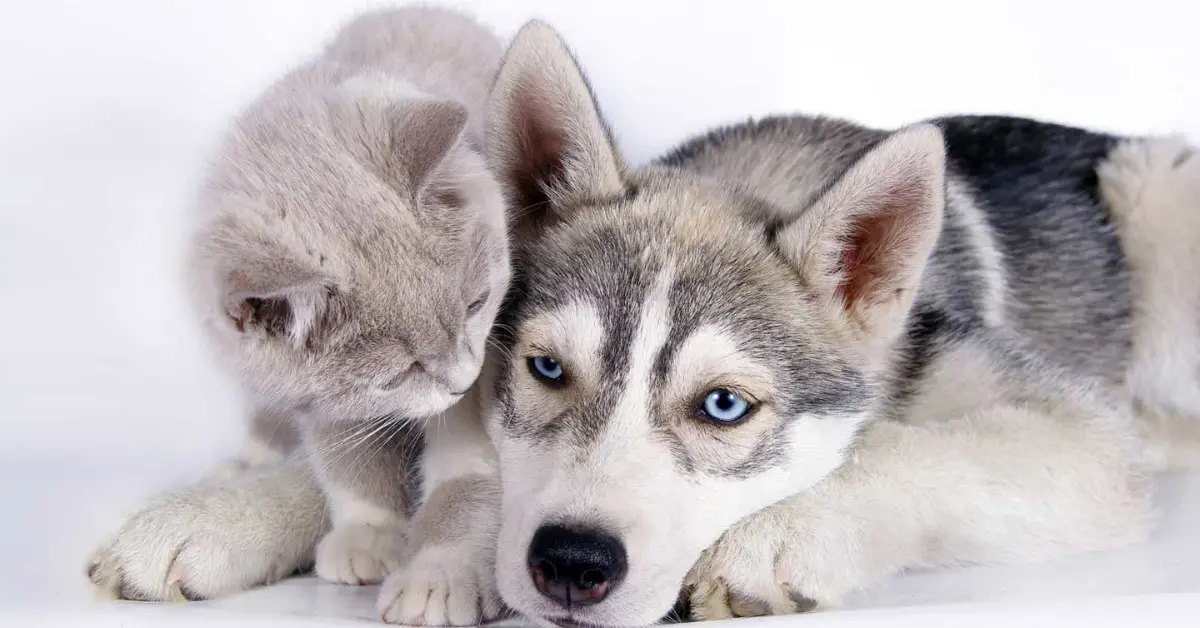Hypoallergenic dog breeds have gained popularity among allergy sufferers due to their reduced potential to trigger allergies. However, when it comes to German Shepherds, one of the most beloved dog breeds worldwide, the question arises: Are German Shepherds hypoallergenic? In this article, we will explore the concept of hypoallergenic dogs and shed light on whether German Shepherds fit this category.
Understanding Hypoallergenic Dogs
Hypoallergenic dogs are known for producing fewer allergens, such as dander and saliva proteins, that tend to trigger allergies in humans. They are often favored by individuals who have allergies or asthma but still want to enjoy the companionship of a furry friend. These breeds are typically less likely to cause allergic reactions, making them a suitable choice for allergy sufferers.
Are German Shepherds Hypoallergenic?
Unfortunately, German Shepherds are not hypoallergenic dogs. They are known for their double coat, which sheds throughout the year. This shedding can release dander, the tiny skin particles that are a common allergen. Additionally, German Shepherds have saliva proteins that can also trigger allergies. These factors make them less suitable for individuals with allergies.
It’s important to note that individual reactions to allergens can vary. Some people might be more tolerant of German Shepherds than others. However, if you have severe allergies, it’s wise to consider hypoallergenic breeds or consult with an allergist before bringing a German Shepherd into your home.
Types of Hypoallergenic Dogs
Hypoallergenic dogs are a popular choice for individuals with allergies or asthma. These breeds produce fewer allergens, such as dander and saliva proteins, making them a more suitable option for allergy sufferers. Here are some types of hypoallergenic dogs:
Poodle Varieties:
Standard Poodle: Known for their intelligence and elegance, standard poodles have hair instead of fur, which reduces shedding and allergen production.
Miniature Poodle: These smaller poodle varieties are equally hypoallergenic and make excellent companions.
Bichon Frise: Bichon Frises has a curly coat that doesn’t shed much, minimizing the spread of allergens.
Maltese:These small, affectionate dogs have long, silky hair that doesn’t shed excessively, making them a popular choice for allergy sufferers.
Shih Tzu:
Shih Tzus have a luxurious, long coat, but they shed less than many other breeds, reducing allergen exposure.
Schnauzer Varieties:
Miniature Schnauzer: These intelligent and spirited dogs have a wiry coat that produces fewer allergens.
Giant Schnauzer: Larger than their miniature counterparts, giant schnauzers also have hypoallergenic qualities.
Portuguese Water Dog:
Originally bred for water-related tasks, these dogs have a curly, waterproof coat that sheds minimally.
Basenji:
Basenjis have a short, fine coat that produces fewer allergens due to their grooming habits.
Kerry Blue Terrier:
Kerry Blue Terriers have a curly, non-shedding coat that is ideal for allergy sufferers.
Irish Water Spaniel:
Known for their water-retrieving skills, these dogs have a dense, curly coat that doesn’t shed much.
Xoloitzcuintli (Mexican Hairless Dog):
This unique breed comes in both hairless and coated varieties, and their minimal shedding makes them hypoallergenic.
Samoyed:
Despite their fluffy appearance, Samoyeds produce fewer allergens because their coat doesn’t trap allergenic particles close to their skin.
Soft-Coated Wheaten Terrier:
These friendly terriers have a soft, silky coat that is less likely to trigger allergies.
Are Dogs Actually Hypoallergenic?
The term “hypoallergenic” when applied to dogs can be somewhat misleading. While certain dog breeds are considered hypoallergenic, it doesn’t mean that these dogs are entirely allergen-free. Instead, it signifies that these breeds produce fewer allergens than other breeds with fur.
The primary allergens associated with dogs are proteins found in their dander (tiny, often microscopic skin flakes), saliva, and urine. Hypoallergenic dog breeds typically have specific characteristics that make them produce fewer of these allergens. These characteristics include:
Low Shedding: Hypoallergenic breeds often have hair instead of fur, or they have specific coat types that shed minimally. Less shedding means fewer allergens are released into the environment.
Less Dander: Some breeds naturally produce fewer skin flakes (dander), which is a common allergen source. Their skin and hair structure can reduce the spread of dander.
Reduced Saliva Proteins: Certain breeds may produce fewer allergenic proteins in their saliva, which can reduce the likelihood of triggering allergies when they lick themselves or their owners.
However, it’s essential to note that no dog breed is entirely hypoallergenic. Allergen levels can still vary among individual dogs of the same breed. Additionally, the term “hypoallergenic” doesn’t guarantee that someone with allergies will not react to a particular dog; it merely reduces the likelihood and severity of allergic reactions.
To minimize allergic reactions when living with dogs, regardless of the breed, consider the following measures:
Regular grooming and bathing to reduce dander and allergen levels.
Keeping the living environment clean, including vacuuming with a HEPA filter.
Providing allergy-friendly bedding for your dog.
Wash your hands and clothing after interacting with your dog.
Consulting with an allergist to identify specific allergens and receive guidance on allergy management.
What Does A Dog Being Hypoallergenic Mean?
The term “hypoallergenic” when applied to dogs refers to breeds or individual dogs that are less likely to trigger allergies in people who are sensitive to allergens commonly associated with dogs. While it doesn’t mean that hypoallergenic dogs are entirely allergen-free, it indicates that they produce fewer allergens or are less likely to cause allergic reactions compared to other dog breeds.
Here’s what being hypoallergenic in the context of dogs typically means:
Less Allergenic Proteins: Hypoallergenic dogs tend to have coats, skin, and saliva that produce fewer allergenic proteins. These proteins, found in dander (tiny skin flakes), saliva, and urine, are the primary culprits for triggering allergies in humans.
Minimal Shedding: Many hypoallergenic breeds have hair rather than fur, or they possess specific coat types that shed less. Reduced shedding means fewer allergenic particles are released into the air and environment.
Lower Dander Production: Dander is a common allergen source. Hypoallergenic breeds may produce less dander, which can help reduce allergic reactions.
It’s important to note that individual reactions to allergens vary, and what triggers allergies in one person may not affect another. Therefore, while hypoallergenic dogs are a more allergy-friendly choice for many individuals, they are not a guarantee against allergic reactions.
Does German Shepherds Shed a Lot?

Yes, German Shepherds are known to shed quite a bit. They have a double coat consisting of a dense undercoat and a longer outer coat, which is responsible for their shedding tendencies. This double coat is designed to provide insulation and protection in various weather conditions.
German Shepherds typically experience two major shedding seasons per year: one in the spring and another in the fall. During these periods, they tend to shed their undercoat more heavily to adapt to changing temperatures.
While German Shepherds do shed consistently throughout the year, their shedding can increase during these seasonal transitions. This means you can expect to find more loose fur on your clothing, furniture, and around your home during these times.
Regular grooming and brushing are essential for managing their shedding. Brushing your German Shepherd helps remove loose hair and prevents it from accumulating in your home. It also helps distribute the natural oils in their coat, promoting healthy skin and fur.
Despite their shedding, many people adore German Shepherds for their intelligence, loyalty, and protective nature. However, if you’re considering bringing a German Shepherd into your home, be prepared for regular grooming and maintenance to keep their shedding in check and maintain a clean living environment.
How can you tell that a German Shepherd mix is hypoallergenic?
Determining whether a German Shepherd mix is hypoallergenic can be challenging, as the hypoallergenic qualities of a dog often depend on its specific mix and genetics. Here are some considerations when trying to assess if a German Shepherd mix might be hypoallergenic:
1. Assess the Mix’s Coat Type: The coat type of the mix can play a significant role in whether it’s hypoallergenic. Hypoallergenic breeds often have hair instead of fur or specific coat textures that shed less. If the mix has a coat similar to a hypoallergenic breed, it may produce fewer allergens.
2. Observe Shedding Patterns: Pay attention to the mix’s shedding patterns. Hypoallergenic dogs tend to shed less, so if the mix exhibits minimal shedding, it might be a good sign. However, shedding can vary even within the same breed or mix, so it’s not a guarantee.
3. Consider Allergenic Proteins: Remember that allergies are primarily triggered by allergenic proteins found in dander (skin flakes), saliva, and urine. While coat type and shedding matter, the mix’s production of these proteins is also crucial. Some dogs, regardless of their coat type, may produce fewer allergenic proteins.
4. Consult with a Vet or Allergist: If you or someone in your household has allergies and is considering adopting a German Shepherd mix, consult with a veterinarian or allergist. They can perform allergy tests to determine specific allergens that trigger reactions. This information can guide your decision.
5. Spend Time with the Dog: Spend time with the German Shepherd mix before adopting to gauge your or your family member’s allergic reactions. Spending time in the dog’s environment can help you assess the individual’s tolerance.
6. Regular Grooming and Cleaning: Regardless of whether a dog is hypoallergenic or not, regular grooming, cleaning, and maintaining a clean living environment can significantly reduce allergen exposure and help manage allergies.
It’s essential to note that no dog, including hypoallergenic breeds, is entirely allergen-free. Individual reactions to allergens can vary, and allergic responses depend on multiple factors beyond the dog’s breed or mix. If you have severe allergies, it’s crucial to take these factors into account and consult with professionals to make an informed decision about bringing a dog into your home.
Conclusion
In conclusion, German Shepherds are not considered hypoallergenic dogs. Their shedding and production of allergens like dander and saliva proteins can pose challenges for allergy sufferers. However, individual reactions may vary, so it’s essential to assess your tolerance and take steps to manage allergies effectively if you choose to have a German Shepherd as a pet. Remember that hypoallergenic breeds are better suited for those with severe allergies, ensuring a healthier and more comfortable living environment.
FAQs
How hypoallergenic are German Shepherds?
Regrettably, we must inform you that these adorable dogs don’t fit the hypoallergenic bill. Their fluffy double coat sheds consistently throughout the year, and when shedding season hits, get ready for a furry explosion. If allergies are a concern, exploring other breeds might be wise (or perhaps investing in a top-notch vacuum cleaner).
What are most German Shepherds allergic to?
Mostly German Shepherds experience allergic skin reactions triggered by typical ingredients found in commercial dog foods and treats. The usual suspects often include animal proteins like chicken, beef, and eggs. Additionally, your furry friend might also react to grains, dairy, root vegetables, or preservatives commonly present in these products.
What is the #1 hypoallergenic dog?
When it comes to hypoallergenic dogs, the larger Standard Poodle takes the crown, but don’t underestimate the tiny Toy Poodle’s ability to produce minimal dander. Poodles exude an air of royalty, making them ideal companions for those who appreciate regal company. Remember, regular grooming sessions are essential to maintain their majestic appearance.

